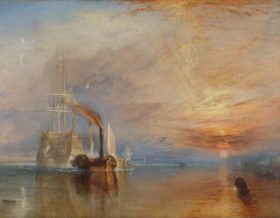Using museum collections as creative starters
This guide is applicable for all age groups, you can download a free, printable PDF version here.
Artists, writers, dramatists, film-makers – they all get their inspiration from somewhere. Whether it’s from something that happened to them, something or someone that captured their imagination or a person, story or event from the past.
Our collection includes a wealth of people, events and ideas from the past to ignite creative imaginations. Whether it’s dramatising a painting, writing a poem or a story about what might have happened to an object in its lifetime or creating an artwork inspired by another artist, there are plenty of examples to provide the perfect starting point.
Show students some of the creative works from our collection and talk about the people, ideas or events that might have inspired them, e.g.
The Tolpuddle Martyrs sculpture
The Apprehensive Man sculpture
Sculpture of Boulton, Watt and Murdoch
Bust of Jean-Jacques Dessaline
Portrait of Mary Wollstonecraft
Launch of the SS Great Britain print
Anti-slavery sugar bowl by Josiah Wedgewood
The Death of Marat painting by Jacques-Louis David
La Marseillaise anthem by Claude Joseph Rouget de Lisle
The Colours song by The Men they Couldn’t Hang
Toussaint Louverture etching by Francois Bonneville
Try using these and other historical sources as inspiration and research for creative projects such as:
Public art
Create a public artwork to memorialise or commemorate a historical event or person such as Mary Wollstonecraft, the Peterloo Massacre or the abolition of slavery. How do the materials, design and where it is situated influence the message of the piece? Try using these examples as inspiration:
The Tolpuddle Martyrs sculpture
The Apprehensive Man sculpture
Sculpture of Boulton, Watt and Murdoch
Soundscapes
What might you hear if you could step inside a painting, or were present at a key event in the past? What sounds would people, machinery, transport, the weather make? What is the overall atmosphere like – somber, exciting, frightening? How might your soundscape convey this? Students could use a simple app like Garageband to create a soundscape. Try these artworks and events as inspiration:
Banner from the Peterloo Massacre
Launch of the SS Great Britain
The life and adventures of Michael Armstrong
Poems and creative writing
Use the Looking closely at images activity to explore an image in detail. Write down the students’ observations and descriptions and use these to create stories, letters, poems, diaries.
Students could create a poetry label – in the form of a haiku for example – for a historical object, or create ‘personification’ poems.
Revolution reimagined
Students could recreate a painting or image from the Age of Revolution for the modern day. How might the Launch of the SS Great Britain be reimagined for a modern-day event of similar significance? Or a schema like the Diagram of a slave ship be used in a current campaign? How do the people and events relate to students’ lives today? How does the way the image is produced differ from methods used for the original – did they use photography or computer-generated graphics, for example?
Memes, GIFs and animations
Have fun importing portraits, paintings or objects into a simple app like Meme Creator or Talkr to make them talk or relate them to the students’ lives today. (See Talking about a revolution and Revolutionary memes for more information).


